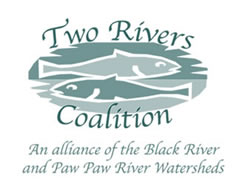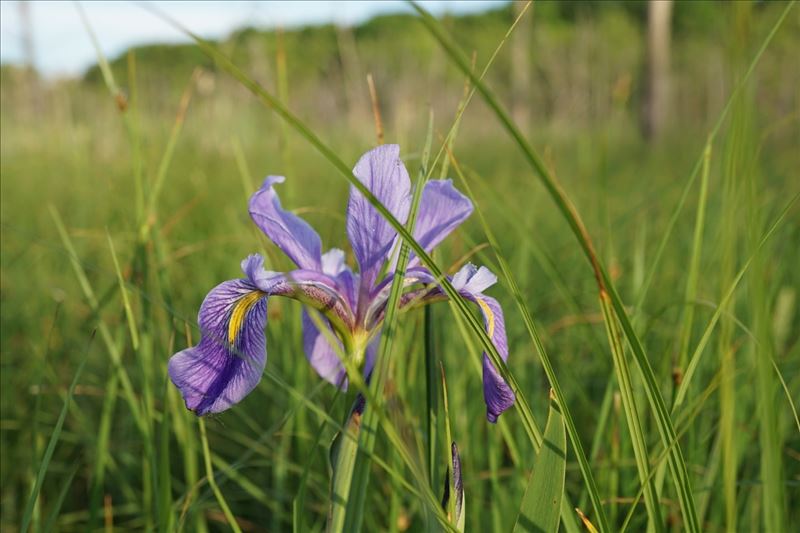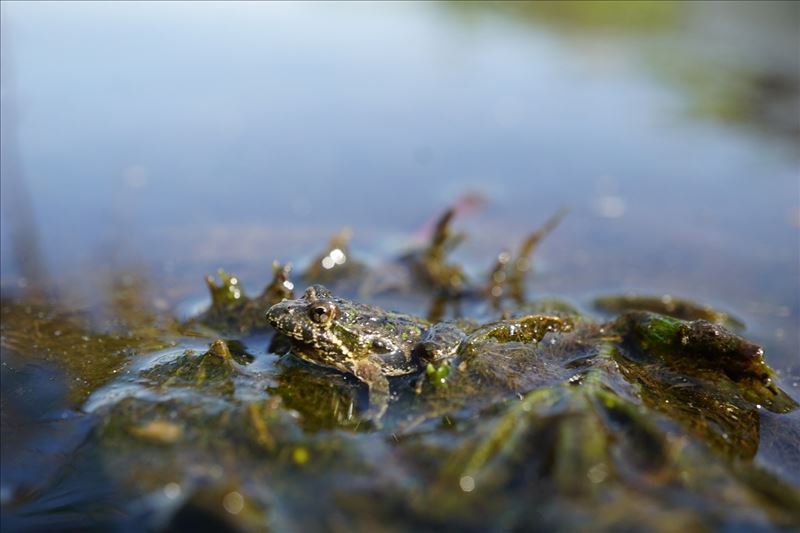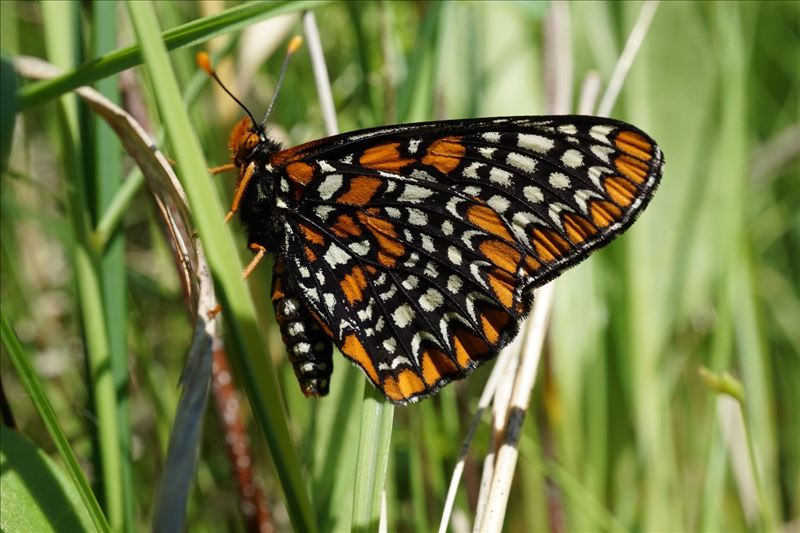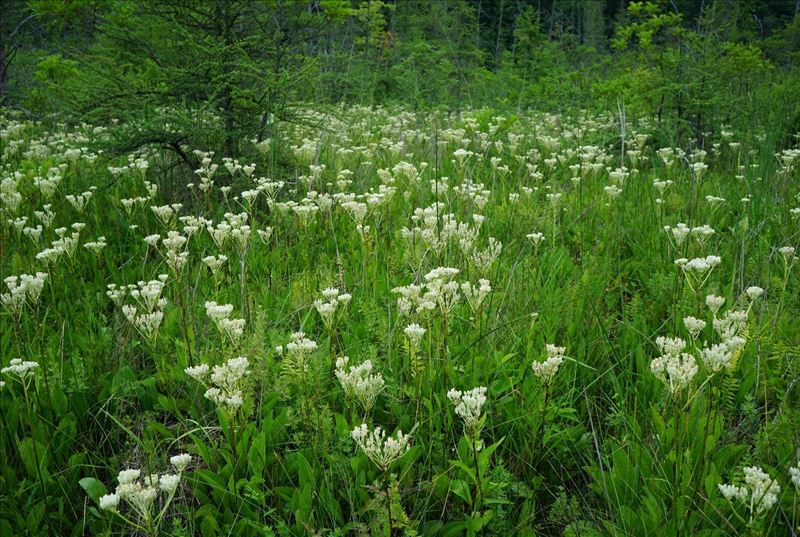Home>Let It Flow
Let It Flow Blog
As the days get noticeably longer and March events are added to my calendar, it signals to me that the end is near of another winter, woody invasives stewardship season. It is not exactly a season noted on the calendar or managed by regulators but is well known to many volunteer stewards. For me this stewardship season begins when the trees have lost most of their leaves in late fall and ends as sap begins to swell overwintered buds in early spring.
As I recently toured a prairie fen I steward on the East Branch of the Paw Paw River, noting this season’s piles of cut invasive shrubs and opened canopy, I was excited for the restoration work completed. I was also saddened to see another season go, even though I knew it meant spring was around the corner. It seems like there is always more work to complete and soon I will have to wait until next year to further help this ecologically important wetland by removing more invasive woody shrubs.
There is something about this restoration work that I find very rewarding. It is tough physical work in cold, southwest Michigan winter conditions, but I am still drawn (if not addicted) to it. Part of the attraction is working outside immersed in the natural elements that awaken dormant senses and muscles not used in my weekly work in the office. Part of it is the physical tasks that drain my ageing body’s meager energy reserves taking with it pent-up anxiety from everyday life and yet somehow leaving me recharged. Part of it is the positive feeling of helping an underdog prairie fen as it fights off a formidable foe in invasive shrubs. The prairie fen has historically had the help of fire in this battle, but that friendly partner has been mostly absent these days and sorely missed by many of the prairie fen’s native flora and fauna that benefit from the open canopy created.
As I toured the wetland pondering the end of another winter stewardship season looking out onto the prairie fen I have worked so hard to help in its struggle against invasive intruders, I found myself thinking about my stepdad and his brother who introduced me to the outdoors as a kid. They are both gone now and, in some way, I think I was hoping they would be proud of the restoration work, its benefit to wildlife, and how they played a role in it by introducing me to the outdoors so many years ago. As I rested on a weathered downed ash tree tossing back trail mix, faded fond memories of early morning fishing and hunting trips with the two of them drifted in lifting my spirits. They would certainly be proud of the restoration work, but being a little old school, they likely would have questioned my sanity. It does seem crazy to think of the hours, effort, and resources I put into volunteer stewardship, yet I benefit as much (if not more) as the prairie fen and its fantastic native flora and fauna. In many ways, I guess you could say I am in a rewarding mutualistic relationship with a pretty prairie fen and thankful for its many mutual benefits.
My hard work during the winter is paid back in full and then some during the growing season when I get to enjoy the bounty of biodiversity found in these healthy prairie fens. With just casual surveys, these prairie fens have about 300 documented species including several rare, threatened, and endangered. From the rare forbs such as orchids, valerian, and plantains to the metallic call of the state threatened Blanchard’s Cricket frog or the confusing Pickerel/Leopard frog calls. From the Blanding’s turtle’s smile and the diversity of carapaces dotting the more open wetlands as they bath in the warm sun to the many interesting insects that keep the ecosystem functioning. From the many more common forbs, sedges and grasses that dominate the wetlands adding texture and an array of colors for the visual senses to soak in to the many snakes winding through this wetland mostly unnoticed. From the sandhill cranes Jurassic like sounds and sight to the barred-owls familiar who-cooks-for-you call that reminds me the end of the day is near.
Beyond being biodiversity hotspots, wetlands are noted as natural water filters removing pollutants and boosting local water supplies, storing carbon to help combat climate change, blunting the impact of floods and storms, and lastly improving our quality of life through recreation and scenic value. During the growing season, I clearly reap many times more rewards than I paid out during the cold, woody invasives season. Maybe that is, in part, why I feel a little sad about the end of the woody invasive season. I feel I am getting the better end of the relationship and need to contribute more, even though I know I can never pay in full what benefits I receive.
If you want to help out with stewardship activities in the watersheds reach out to these groups as they conduct periodic workdays.
Sarett Nature Center: Sarett Nature Center – The nature center for our community.
Southwest Michigan Land Conservancy: SWMLC | Conserving natural lands of southwest Michigan
Michigan Nature Association: Michigan Nature Association
Liberty Hyde Bailey Museum: Liberty Hyde Bailey Museum and Gardens
Friends of the Kal-Haven Trail: Friends of the Kal-Haven Trail – Nature’s Pathway ~ A Trail For All Seasons (kalhaven.org)
